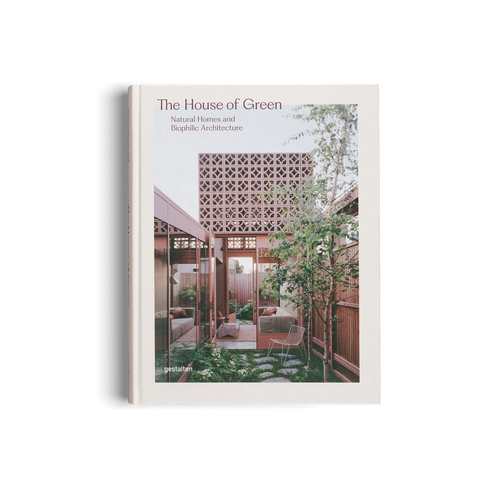
03/2021 architecture & interior
At the turn of the millennium, a new wave of studios focused on modern vernacular architecture began to emerge in China. This shift presented a return to localism and valued design tied to cultural tradition. Pritzker Architecture Prize winner Wang Shu has been at the forefront of this movement since founding Amateur Architecture Studio in 1997 with his wife, Lu Wenyu. In contrast to the “copycat” structures that have come to dominate the skyline of many cities or the experimental façades constructed by Western practices, Shu sought to strengthen Chinese characteristics and preach a modern design language centered on regionalism.
Writer of the preface of our book Beauty and the East, Shu introduced readers to modern Chinese architecture and outlined this growing movement’s focus on tradition, transforming materials, and creating beauty that is pleasing to the eye. Yoko Choy, the China editor of Wallpaper*, originally spoke with Shu for the book to discuss how this style has begun to reshape urban sprawls and the hinterlands. With many stones still to turn over, they continued their discussion on design diversity and modern China for Architizer.
Choy: Chinese architecture and architects are receiving a lot of attention at the moment. Taking into account China’s different cultural background that you’ve discussed, what kind of influence and contribution, in your opinion, could Chinese architects bring to the global architecture community?
Shu: Chinese architects should reflect on their role in an era full of cultural conflicts and the current circumstances of the environmental crisis to decide what values and contributions they could make on a global scale. One of the main subjects would be to establish a contemporary architectural ecosystem that allows us to coexist with nature and step away from the overly artificial and industrial state of affairs. This is what we should be discussing: not simply Chinese cultural identity at face value. Many people tend to simplify Chinese culture into decorative symbols and neglect to address essential philosophical discussions about our core values.

Just to the north of Yinzhou Park in the city of Ningbo, the Ningbo Historic Museum occupies space in a massive plaza landscaped with fountains and newly planted trees. Inspired by a mountain landscape rather than the urban one it serves, the three-story building is an enormous hulking form with impressive outward-sloping walls. (Photo: Iwan Baan for Amateur Architecture Studio, Beauty and the East)
In the preface, you pointed out that “architects are ideological and exploratory by nature, but the inadequacy of construction quality has been an arduous challenge.” Today we indeed see a lot of “photo-architecture,” where designs that look perfect in photos but less in reality. What's your opinion in that regard?
Indeed, it’s true that some architects know perfectly how to make a building appear flawless on photographs but care less about how to perfect the spatial details of the actual architecture. On the other hand, I think it is a question of the architects’ experience and capability too. Architectural education in China is heavily influenced by Western schools. I think that in some Western schools, the way architecture is taught can be problematic as neither the students nor the educators are given enough opportunity to practice and perfect their craft; the curriculum is thus very much focused on concepts and theories. In our opinion, this kind of architectural education is at a very preliminary stage and is not sufficient. Architects need to mature gradually by practicing; it takes years of practice for an architect to understand his role in society. The problem with copying the Western educational model is that the reality in China is different–students are expected to take charge of projects right after graduation.
A fresh architect graduate usually requires years of training as an apprentice before being put in charge of a project, yet in China, as demand is ever-growing, opportunities are abundant for even the least experienced professionals. Consequently, although they can make photogenic buildings, a lot of details are left out of the bigger picture.
This is a problem rooted in our education. China's architectural education should be aimed at our special situation. In my role as an educator (Wang is the head of a faculty of architecture in the Chinese Academy of Art in Hangzhou), I prioritize construction methods before theories; our students learn to work with materials with their hands before learning abstract theories. They have to acquire basic carpentry skills and learn how to work with bricks and rammed earth to build surfaces. Ideas that cannot be executed are worth nothing; in fact, this methodology also reflects the essence of the “craftsmanship” in the Chinese architectural tradition. At first glance, this tradition seems not to be bound to any philosophy or ideology, but it has a knowledge system that is built around materials combined with partisanship.
Our current educational model in China has lost touch with our longstanding traditions of craftsmanship. Graduates get to start their professional life without a formal traineeship which would prepare them for the standards of the industry. There is also the emergence of an architectural tendency in China that can be called "decorative architecture" or "scenic architecture." This is something more of a theatrical expression than an architectural expression. These can bring about a quick delivery; however, in consequence, while the buildings will have a nice-looking, modern façade the inside will be full of problems.

The concrete canopy of Sanhe Residence, while echoing the form of traditional Chinese dwellings, also has practical uses for drainage and shading. Nestled in a forested valley on the outskirts of Nanjing, the ancient capital of Jiangsu Province, Sifang Art Park, established in 2003. (Photo: Xia Zhi for Amateur Architecture Studio, Beauty and the East)
Do you consider it necessary to preserve the traditional architectural typologies that retain a Chinese cultural identity?
Culture is not a material need. Culture relies on its people's autonomy–it continues to exist when people are conscious about producing and protecting it. On the contrary, the culture will disappear if this consciousness fails to exist. For example, while we were working on a preservation project in the local village of Wencun near Hangzhou a few years ago, we were planning to build a courtyard inside every residence. I always consider a courtyard as essential to the traditional culture and lifestyle in China. Therefore, having a courtyard seems to be natural and reasonable. But to our surprise, the locals held the opposite opinion–no one wants a courtyard nowadays. Each household was allocated a fixed 100 sqm of space from the authority for building their home, a layout of approximately 10m x 10m, and people simply preferred to put every single centimeter to use instead of making room for an “empty” courtyard, which is a utilitarian mindset would be considered as an economic loss.
To resolve this “simple” problem, we had to approach the provincial municipality and persuade them to add a courtyard in the land allocation as an experiment in reviving the tradition and preserving the culture. Without this shift in local policy, no one would say yes to a courtyard. In other words, culture plays a limited role in situations like this, and intervention is needed to revive traditions. In the end, the locals were very happy when the courtyard was installed.
They realized how precious a courtyard could be to the lifestyle that they once lived. They would dry their duck and other meat products or make pickles in the courtyard; they would also hang out with their neighbors there–these are all the cultural activities that are inseparable from a courtyard. We can see how fragile culture can be–once you interrupt its natural continuation, it is not that simple to restart it.

Random geometric openings in the facade of Ningbo Historic Museum are a characteristic feature of the practice’s designs. The facades incorporate recycled bricks and tiles from around 30 villages demolished in the area. (Photo: Iwan Baan for Amateur Architecture Studio, Beauty and the East)
You mentioned that Chinese ideas of architecture are more concerned with nature than those in the West. Do you think the experiences and ideas of Chinese architects can be used as a reference for the future development of the international community?
Definitely. There are architects in the international community who are also challenging the overly industrialized and artificial system of our society today. However, in many cases, the latest methods being suggested are not compatible with the modern scientific and technical specifications in building regulations. It is not about architects favoring a certain way of building but rather that the system of technological thinking creates a strong divide between man and nature. Some French architects are attempting wooden high-rise structures and Chinese architects are trying out ways to use rammed earth in large-scale buildings. Both face the same problem–how to incorporate technology and satisfy modern technical specifications in the building process when handling natural materials. We might also encounter difficulties from other aspects of this process; for example, this generation of construction workers has lost touch with building traditions and can no longer work with natural materials or in a craftsmanlike manner.
Equally, after completion, the management or government departments have little technical back-up information and support to properly maintain the structures. In this regard, I would say this is a revolutionary era in which to rethink the notion of “new architecture” and to develop a tenable system for it.
We are constantly discussing the impact of architecture on our society and environment. From the perspective of environmental protection and sustainable development, it is only reasonable to produce architecture of high quality and great longevity. But it is not the case yet in China.
I think the situation in China now is a result of a whimsical mix of Chinese and imported culture. Most of our buildings look like merely temporary structures and have been erected for a short-term purpose and agenda; they will be torn down and rebuilt in about 10 to 20 years. On one hand, this reflects a utilitarian, profit-driven way of thinking that renders architecture primarily a commercial product of the burgeoning market economy.
Investors think that as long as the building is sold then it’s time to move on to the next project. Our contemporary society is impetuous and lacks an appreciation of sustainability and quality. On the other hand, again, it’s about Chinese architectural traditions. Traditional Western architecture was created with materials like stone to last a thousand years, the idea of longevity and sustainability is embedded in the process.
Chinese architecture, however, stems from a different way of thinking about sustainability as it employs materials like soil and wood, which are not supposed to last forever. Using seemingly fragile and short-lived materials it builds a resilient and flexible natural system that is constructed to achieve a kind of cyclical endurance that reflects the essence of traditional Chinese culture. However, this essence and innate connection with nature has gradually faded from modern Chinese society, but I think such a way of looking at things still exists in our consciousness.
Presenting the new face of Chinese architecture where local ideals are being translated into a design language for this powerhouse. Find out more about Beauty and the East.













